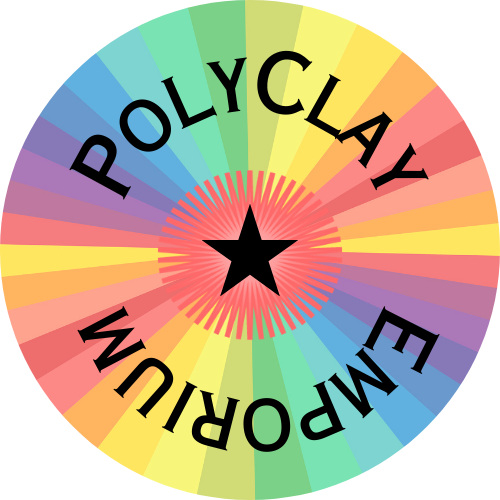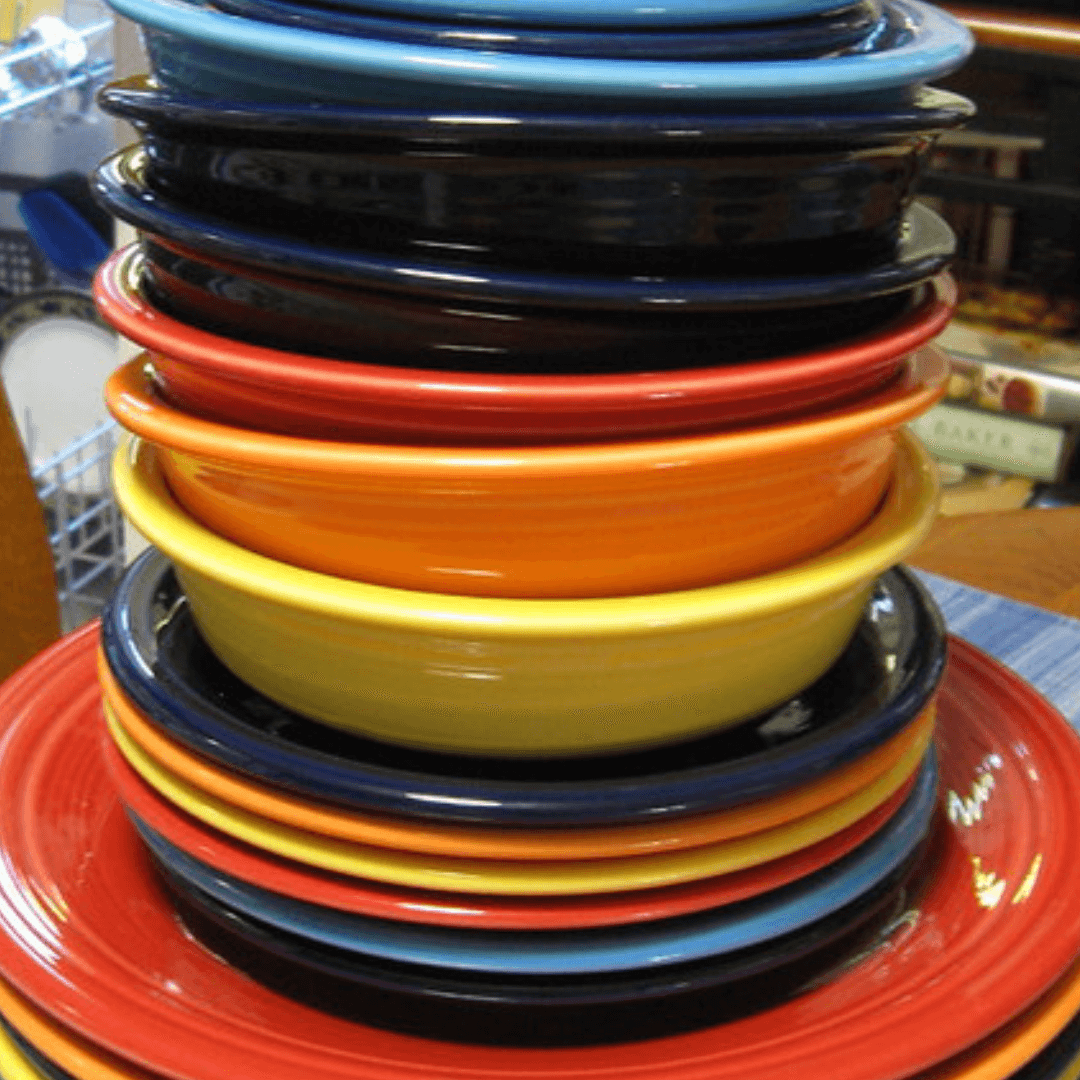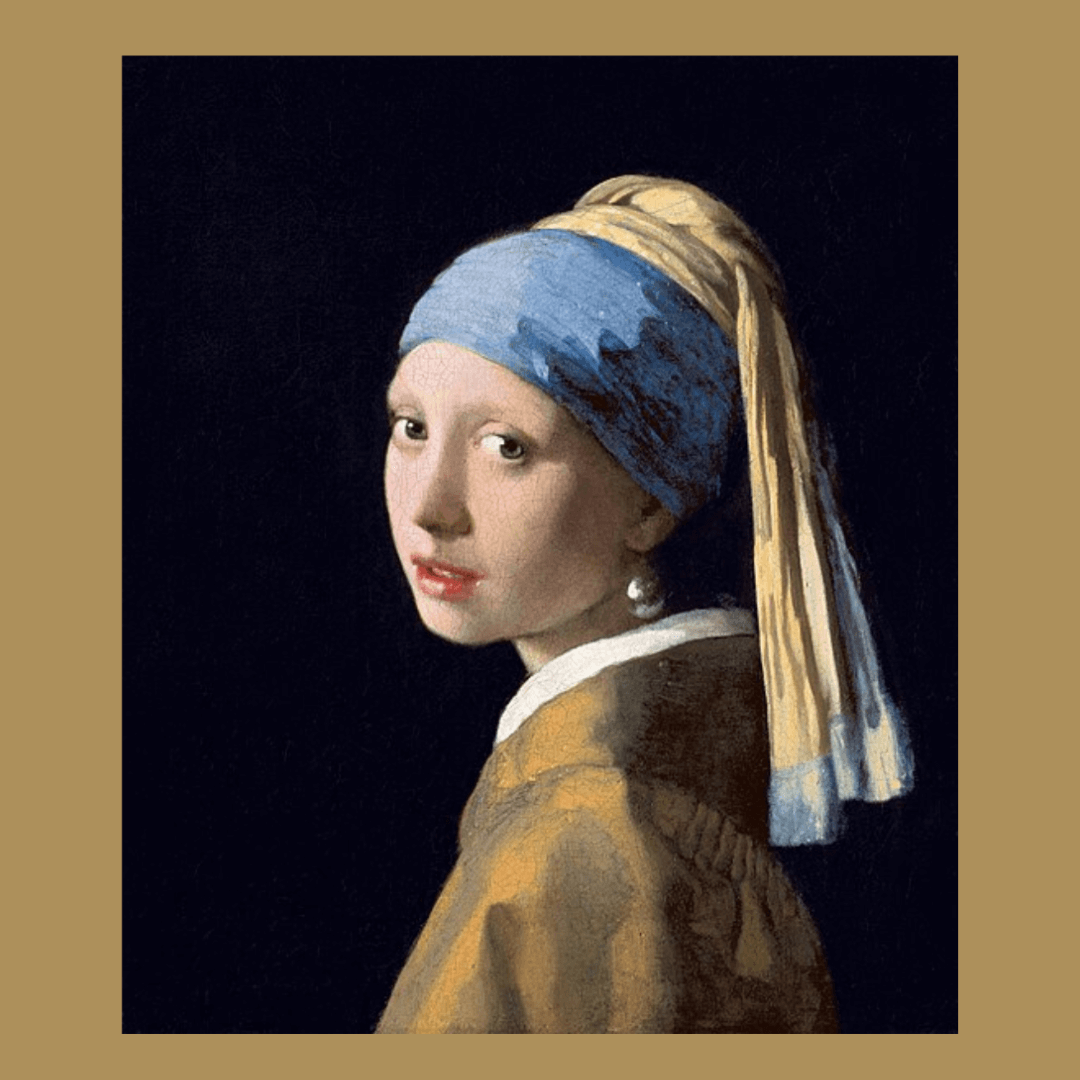Are you looking for colors to inspire you? Here's a fabulous palette!
On a very cold day, you can inspire people with bright colors, make then feel a bit warmer. And that's how Fiesta Ware make such a big impact at it's first appearance
It was colder than usual in Pittsburgh in January, 1936. The Pittsburgh China & Glass Show was underway. Everyone was bowled over by the new china line from the Homer Laughlin China Company. Fiesta Ware’s bright colors and simple bold design attracted tons of attention amid the other manufacturers’ traditional more neutral colors and classic designs.

Fiesta designed these dishes especially to inspire and appeal to the housewife. In the middle of the Great Depression, setting a bright table provided some cheer. Most china in the 1930’s was sold in ‘place settings’ or ‘sets’. Fiesta broke with the pack by making every piece individually purchasable! They encouraged creative table setting, moving away from the "All the dishware must match" mentality.
Copy for an early ad read:
"COLOR! that's the trend today ..." , "It gives the hostess the opportunity to create her own table effects ... Plates of one color, Cream Soups of another, contrasting Cups and Saucers ... it's FUN to set a table with Fiesta!"
This ad is from April 1st, 1938- but it was no April Fool’s joke! Each piece was available separately! Those prices definitely inspire me: 40¢ for a 10" dinner plate, 25¢ for a tea or coffee cup!

What was so remarkable about the design of this china that it sold like hotcakes? First, the colors: the six original colors were green, cobalt, turquoise, red, yellow and ivory. They were chosen to look good together, inspiring creative table-setting.

The main design feature is concentric rings, becoming slightly further apart as they progress from the center of the dish outward, as you see in this turquoise dinner plate and red pitcher.


This design is an appealing example of the Streamline Moderne designs of late Art Deco.
These six colors were produced for the next 15 years, until the early 1950’s, with one exception. Making the red dishes required a uranium oxide. In 1943 the US Government mandated no further ‘civilian’ use of uranium as it was all required for the War Effort. No red dishes were produced between 1944 and 1959. They were then produced again from 1959 - 1969. The red is actually an orangy-red, tomato-soup-like color- vibrant and beautiful- Easy to inspire!

Sometimes we humans get sucked into doing things that are quite odd, and these stories from the past could easily inspire some of today's memes!
Here’s an entry for your That’s Absurd file: Sometime in the 1950’s people began worrying that Fiestaware emitted harmful amounts of ionizing radiation, especially the red color. There have actually been serious studies of the amount of radioactivity in Fiesta and other dishware from that time. One conclusion:
According to one calculation, the radioactivity leached into food from Fiestaware, if it were the only dishes you used for a whole year, would result in 40 mrem of radioactivity annually, though there are certainly other ways of calculating the radiation exposure. The U.S. Nuclear Regulatory Commission suggests an upper limit of 100 mrem per year for members of the public. (Dusty Old Thing).
Apparently, some people became impatient with the whole Fiesta-radiation exaggeration. In exasperation, one was inspired to write:
“This plate was left to me by my great-grandmother, and I noticed that whenever she ate anything from it, her ears would light up; so we all had to wear dark glasses when dining at her house…” (Palm Beach Times, February 1963)
To add a 21st century absurdity chapter to this silliness, in January 2021, the Philadelphia Inquirer published an article "Haddon Township High students evacuated after uranium-glazed plate brought to school". They further reported:
“The Cherry Hill Courier-Post reported that in an interview, a student said he had brought in a piece of an antique Fiestaware plate to show to a teacher, and that the student’s mother said the plate was glazed with radioactive uranium.”
They included this photo. Yikes!!
“Fire Department personnel exit Haddon Township High School on Friday after a student had brought a potentially dangerous substance into the school, the district said in a statement.”

By the early 1950’s, post-WWII color tastes were changing, away from the original colorful exuberance toward more muted pastels. Borrowing from current fashion colors, Fiesta introduced 4 1950’s colors: chartreuse, rose, forest green, grey.
Fiestaware sales and popularity waned, and production ceased in 1964.
As you probably know, Fiestaware is currently (2021) being manufactured again- a story for another post. It's still way cool!
Here’s my personal collection of vintage Riviera (sister dishware line) salt shakers in traditional Fiesta colors. Don’t they look fabulous?!!

What Truly Inspires us about Fiestaware:
- Those 6 original colors- so vibrant, so joyful! Those 4 colors added in the 1950’s are attractive enough, but those early colors really grab us!
- Circles, concentric circles. Being complete, circles tend to evoke feelings of satisfaction or completeness.
- The glaze. Shiny with a bit of matte, so satisfying to look at and to feel.
Design Take-Aways:
- Simplify. One approach to design is to keep removing extraneous parts until you are left with a shape or design that feels elemental.
- Experiment with color. If you are designing related pieces (necklace and earring set, maybe?) they may feel fresher and more satisfying if they are related colors that sing well together rather than just repeating the same color in each piece.
- Encourage your customers to express themselves. Early Fiesta ad strategy was remarkable for encouraging people to buy a piece at a time and create unique combinations for their tables. Judging by popularity and sales, this was an effective strategy!
Further reading:
https://www.yesterdaysnews.biz/post/history-of-fiesta-ware accessed 21 March 2021
https://fiestafactorydirect.com/pages/our-history accessed 28 March 2021
https://www.thoughtco.com/how-radioactive-is-fiesta-ware-608648 accessed 29 March 2021
https://dustyoldthing.com/fiestaware-radioactive/ accessed 29 March 2021




